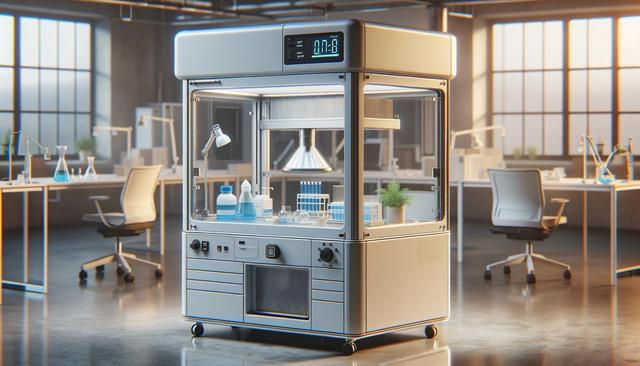
Portable Fume Hoods: Safe, Mobile Protection for Lab Environments
Understanding the Role of Portable Fume Hoods
Laboratories often require specialized equipment to maintain safety and compliance, especially when working with volatile chemicals or hazardous substances. Portable fume hoods offer a versatile solution for creating safe work environments without the constraints of fixed installations. These units are designed to provide localized ventilation by capturing dangerous vapors, fumes, and particles at the source, helping to reduce the risk of exposure for lab personnel. Unlike traditional fume hoods that are permanently installed in one location, portable models can be moved to different workstations or even different buildings, depending on the needs of the facility.
The flexibility of portable fume hoods makes them particularly valuable in dynamic lab environments where workflows and space usage frequently change. Whether used in academic research, industrial testing, or mobile laboratories, these units support a wide range of applications including chemical handling, biological sample preparation, and forensic analysis.
Key Features and Components
Portable fume hoods are engineered to combine mobility with effective containment of hazardous substances. Their core components are typically similar to those found in traditional fume hoods but adapted for portability and ease of use. Common features include:
- High-efficiency particulate air (HEPA) or carbon filtration systems
- Adjustable airflow controls and fan speed settings
- Transparent viewing panels for clear visibility
- Sturdy caster wheels with locking mechanisms for stability
Some models also offer optional upgrades such as digital airflow monitors or integrated lighting to enhance user safety and convenience. These features make portable fume hoods suitable for both temporary setups and long-term use in labs that require frequent reconfiguration.
Advantages Over Fixed Systems
One of the main advantages of portable fume hoods is their ability to adapt to changing laboratory needs. Unlike fixed systems that require extensive installation and may be limited to specific locations, portable units can be deployed quickly and efficiently. This flexibility is particularly useful in the following scenarios:
- Temporary research projects or fieldwork
- Shared laboratory spaces where multiple users require fume containment
- Emergency situations where immediate containment is necessary
Additionally, portable fume hoods can be a cost-effective solution for smaller labs or organizations with limited budgets. Since they do not require ductwork or extensive modifications to existing infrastructure, they can be installed with minimal disruption and at a lower overall cost.
Applications Across Diverse Lab Settings
Portable fume hoods are increasingly being adopted across various industries and laboratory environments due to their adaptability and performance. They are commonly used in:
- Pharmaceutical labs for weighing and compounding active ingredients
- Educational institutions for safe demonstration of chemical reactions
- Environmental testing labs for sample preparation and analysis
- Biotech and life sciences for sterile handling of biological samples
In each of these settings, portable fume hoods contribute to a safer working environment by minimizing exposure to harmful substances. Their compact design also makes them ideal for labs with limited space or those that need to comply with strict regulatory standards without undergoing major renovations.
Maintenance and Safety Considerations
To ensure optimal performance, portable fume hoods require regular maintenance and proper operation. Users should be trained on the correct use of the equipment, including how to handle filters, adjust airflow, and monitor performance indicators. Routine maintenance tasks may include:
- Replacing filters as recommended by the manufacturer
- Inspecting seals and gaskets for wear and tear
- Cleaning internal and external surfaces to prevent contamination
Regular performance checks are also essential to verify that the fume hood is effectively capturing and filtering hazardous substances. Some models come equipped with airflow alarms or digital monitors to alert users if there is a drop in efficiency. By following best practices in operation and maintenance, labs can maintain a high level of safety and extend the lifespan of their portable fume hoods.
Conclusion: Supporting Safe and Flexible Lab Environments
Portable fume hoods are a practical and effective solution for laboratories that prioritize safety and adaptability. Their ability to provide localized ventilation wherever it’s needed makes them invaluable in modern lab settings with evolving needs. By investing in well-designed portable fume hoods and ensuring proper maintenance, labs can protect personnel, maintain compliance, and support a wide range of scientific activities without being confined by permanent infrastructure.


